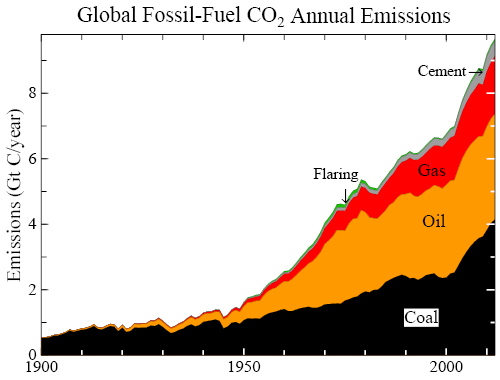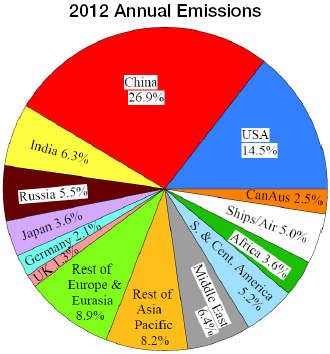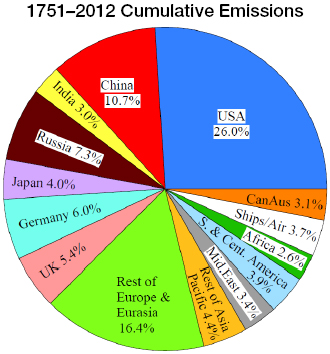Renewable energy, nuclear power and Galileo
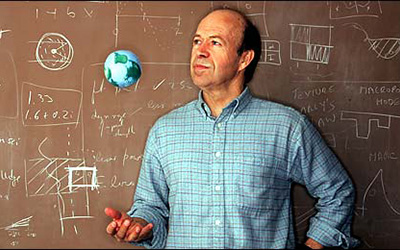
Draft opinion piece
Do scientists have a duty to expose popular misconceptions?
Renewable energy, nuclear power and Galileo
Contents
- Introduction
- Carbon math
- Energy math
- Economic growth, energy intensity and carbon intensity
- Slowing carbon emissions growth
- China–US cooperation and planetary resurgence
- Energy misconceptions
- Summary 1: How Can China and the United States Cooperate?
- Summary 2: What Can the Public and Scientists Do?
Introduction

Dr James E Hansen: “Galileo knew that the truth would come out eventually and no one would be harmed. So he could just mutter under his breath ‘and yet it moves!’ That, I cannot do.” image https://www.facebook.com/jimehansen
Climate scientists have long warned of potential catastrophic effects of unchecked fossil fuel use.
Public awareness of the climate threat has increased. Yet growth of carbon dioxide (CO2) in the air, the main driver of climate change, has accelerated inexorably, as nations use cheap fossil fuels to power their economies.
Governments recognize the climate threat, universally endorsing the Framework Convention on Climate Change, with the objective of avoiding dangerous climate change. Yet governments continue to encourage the fossil fuel industry to extract almost every fossil fuel that can be found, including the most carbon-intensive and dirtiest fuels such as coal, tar sands and tar shale.
How can governments be so unresponsive to a public need? ‘It’s not dumbfounding,’ you may say. ‘The fossil fuel industry uses its enormous resources to influence public opinions and government policies.’ Certainly they do, but that is only part of the story, and that part of the story has been reported reasonably well.
Here I present climate and energy data to help expose popular misconceptions about energy. These misconceptions have a greater impact on prospects for stabilizing climate and preserving the remarkable life on our planet than fossil fuel lobbyists and climate change deniers will ever have. First I must present data for what I call the ‘carbon math’ and the ‘energy math.’
Carbon math
A specific carbon math is beginning to be appreciated by the public and policymakers, thanks to a dogged ‘do the math’ tour and advocacy by Bill McKibben and his 350.org organization. The goal of 350.org, eventual return of atmospheric CO2 to a level no greater than 350 ppm (parts per million), was born several years earlier. It had become clear that CO2 should peak at less than 450 ppm and eventually decline to no more than 350 ppm, if we are to retain a planet closely resembling the one that we know and love—a planet with reasonably stable shorelines that preserves the abundance of other species, species whose services humanity so enjoys and takes for granted. The scientific basis for this conclusion was documented in papers by authors with a broad range of relevant expertise.
The implication of the carbon math is that most of the remaining high-carbon fuels—coal and unconventional fossil fuels such as tar sands—must be left in the ground. The world must move rapidly to clean carbon-free energy, or we will leave our children and future generations a deteriorating climate system spinning out of their control.
Energy math
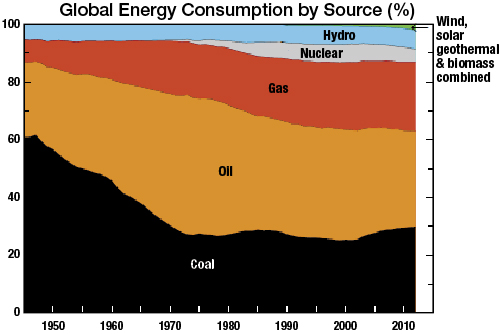
Figure 1b: World energy consumption (excluding wood). Relabelled by Mahurangi Magazine for onscreen clarity
Governments are not entirely ignorant of the carbon math, but their concerns about energy usually outweigh concerns about carbon. Therefore, it is important that the energy math be well understood, as well as the relationship between the carbon math and energy math. I will argue that there are misunderstandings or misconceptions of the energy math, which can almost be characterized as myths. Let’s first examine some fundamental carbon and energy data.
Carbon (CO2) emissions did not decline following the 1997 Kyoto Protocol. Indeed, emissions and even the growth rate of emissions accelerated (Fig. 1a). The largest growth of CO2 emissions and energy use was in China, where provision of electricity expanded to more than 90% of the population, lifting several hundred million people out of poverty. Coal use caused most of the emissions growth and coal is now the source of nearly half of global fossil fuel carbon emissions (Fig. 1a).
Fossil fuels provide more than 85% of the world’s energy (Fig. 1b). One misconception discussed below concerns the fallacy that renewable energy is rapidly supplanting conventional energy. Total non-hydro renewables today offset only about one year’s growth of energy use.
Energy use and carbon emissions in developed countries approximately leveled off over the past 35 years (Fig. 2), where developed countries are defined as Europe, the U.S., the former Soviet Union, Japan, Canada, and Australia. The leveling of emissions from developed countries is in part a result of outsourcing of manufacturing to developing countries.
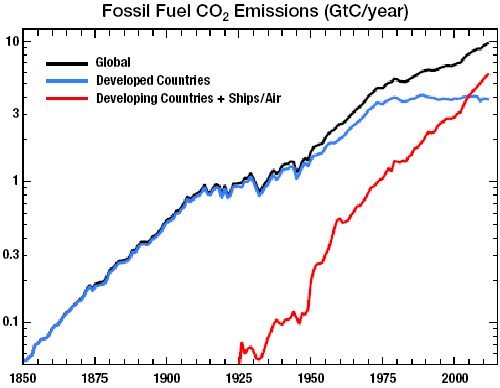
Figure 2a: Global CO2 annual emissions (log scale). Relabelled by Mahurangi Magazine for onscreen clarity
Global carbon emissions (Fig. 2a) are the sum of exponential growth curves for developed and developing countries, with developed country growth climaxing about 1970. Energy use in developed countries continued to increase modestly after 1970 (Fig. 2b), but carbon emissions stabilized because the increased energy was provided mainly by nuclear power.
Global energy consumption will continue to rise for decades. Why? First, population is likely to reach about nine billion before it begins to decline, even in the best case. Second, developing world energy use is still rising (Fig. 2), as it must to achieve living standards that allow their emphasis to be on more than survival. Even China, though most of its population is now above the poverty line, will use more energy, because its economic development and the well-being of its citizens are not yet at the point where energy needs level out. Third, in the developed world, despite improving energy efficiency and assertions by some people that they will live low energy life styles, there is no indication of a dramatic decline in overall energy use. People travel and plan to continue to travel. Small declines in energy use in the developed world so far are a consequence mainly of outsourcing of manufacturing, not low-energy life styles.
Abundant affordable energy is essential to address the world’s economic and environmental problems. Energy is needed to achieve adequate living standards and a stable human population. Economic progress makes it possible to pay attention to the environment, as required if we are to share the planet with the other species, which are needed for our own well-being. With economic progress fertility rates in most developed nations have fallen close to or below the level required for population stability or decline. I believe that the best hope for preserving Earth’s environment and its invaluable abundance of life is through intelligent economic development, and economic development requires a substantial level of affordable energy.
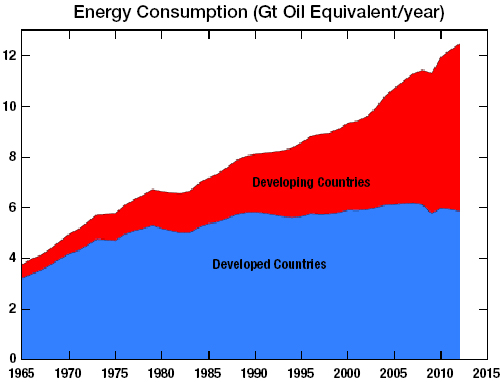
Figure 2b: Global energy consumption. Relabelled by Mahurangi Magazine for onscreen clarity
Fossil fuels provided the energy that today’s developed world employed to reach its current standard of living. Unfortunately, if the developing world follows that fossil fuel path, there will be no winners—the carbon math makes that clear. Yet if fossil fuels provide the only realistic available path to development and improved living standards, that path surely will be taken.
It is easy to blame governments for the fact that we are marching inexorably toward climate disasters, as if humanity were a bunch of lemmings scurrying toward a cliff. I have argued that politicians are well-oiled and coal-fired, and, indeed, documentation of that exists. However, this is surely not the only cause, and it may not be the most important one.
Indeed, a case could be made that politicians have been pushed into a situation such that they have no choice but to approve continued coal burning, hydro-fracking for increased gas and oil production, and pursuit of oil and gas in extreme and pristine environments. For the sake of understanding the present situation, we must introduce and combine some basic economic, energy and carbon facts.
Economic growth, energy intensity and carbon intensity
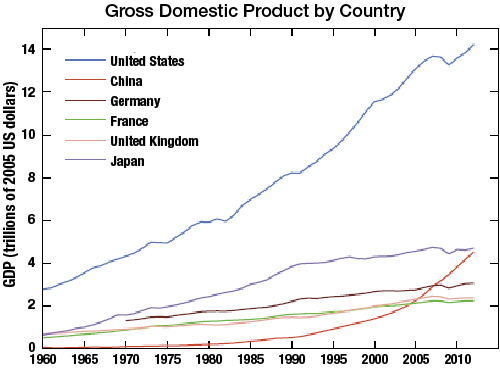
Figure 3a: Real gross domestic product of several nations. Relabelled by Mahurangi Magazine for onscreen clarity
Economic growth is needed to provide resources to phase out global poverty and replace dirty high-carbon energy with clean energy sources. The common observation that exponential growth cannot continue for long on a finite planet does not imply that we must go back to pre-industrial life styles. The growth rate of world gross domestic product (GDP) will decline, indeed, it already has declined from about ~5%/year in 1945-75 to ~3% year in recent decades (Fig. 3; annual growth rate of GDP 5-year mean change) and it likely will continue to decline in coming decades. High growth rates are needed in developing countries to end poverty, but the portion of world GDP in developing nations will decline as some nations move to developed nation status.
Climate change will hamper economic growth if climate change spirals out of control, but actions required to avert climate change do not need to hamper the economy. Averting climate change requires restricting fossil fuel carbon emissions, but there is no per se restriction on economic development. The relation of carbon emissions to GDP is given by the simple formula:
Carbon = GDP × EI × CI
or, in words,
Carbon Emissions = Gross Domestic Product × Energy Intensity × Carbon Intensity
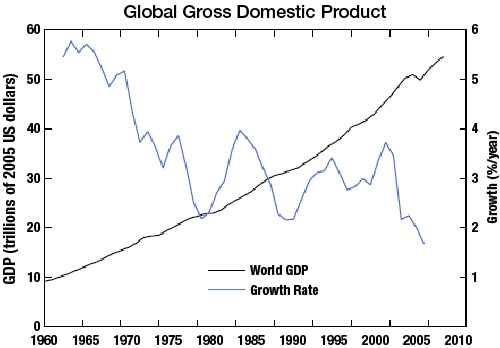
Figure 3b: GDP and its annual growth rate. Annual growth rate of GDP, blue curve, is the mean annual growth over a 5-year period. Relabelled by Mahurangi Magazine for onscreen clarity
Energy intensity is the energy used to produce a unit of gross domestic product (GDP). Carbon intensity is fossil fuel carbon emitted per unit energy. Global energy intensity (Fig. 4a) decreased ~0.85%/year during 1965-2000 and carbon intensity decreased ~0.40%/year (Fig. 4b). Heavy black lines in Fig. 4 show global averages of EI and CI. Thus the global GDP growth of +3.52%/year in 1965-2000, was partially offset by the declines of energy and carbon intensities. Net growth of +2.27%/year over 1965-2000 based on these changes of GDP, EI and CI imply carbon emission growth of ~119% over 35 years, which is consistent with actual fossil fuel CO2 emission growth (116%) of Fig. 1a.
We focus on global energy and global carbon intensities, because they are the quantities that impact global climate. Also global quantities inherently include the effects of outsourcing, i.e., transnational shifting of manufacturing with resulting increased transportation distances.
Explosion of coal use in the 21st century (Fig. 1a) reversed the downward trend of global carbon intensity (Fig. 4b), which instead increased +0.6%/year during 2000-2012. Global energy intensity was flat (~0.1%/year) during 2000-2012, as energy intensity decreases in developed countries (partly a result of increased outsourcing of manufacturing) were offset by the increasing fraction of energy use in developing countries with higher, albeit decreasing, energy intensity. Consequently, despite a global economic crisis within the 2000-2012 period and a global GDP growth rate of about 2.5%/year, fossil fuel carbon emissions increased 3%/year during 2000-2012.
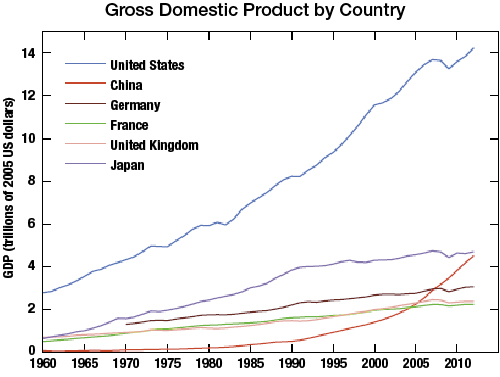
Figure 4a: Energy intensity, defined as energy consumption (Gt of oil equivalent) divided by real gross domestic product (trillions of 2005 US $). Relabelled by Mahurangi Magazine for onscreen clarity
Global and national energy and carbon intensities (Fig. 4) provide some insights relevant to policies required to achieve rapid slowdown of global carbon emissions. First, the seemingly paradoxical result that global energy intensity is barely declining despite large improvements in individual nations is a readily understood consequence of the increasing proportion of carbon emissions from developing countries. Shifting of manufacturing to developing countries is likely to continue, e.g., from China to less developed countries as costs in China rise along with an increasing standard of living there. One implication is the need for an international carbon fee or tax, which would simultaneously put downward pressure on both global energy intensity and global carbon intensity, as discussed below.
The carbon intensity of China is stubbornly high (Fig. 4b) because of the high proportion of coal in its energy portfolio. France achieved the greatest reduction of carbon intensity (Fig. 4b) via a shift over about a 10-year period to nuclear power for 80% of its electricity. French carbon intensity stalled at about half of global carbon intensity, because of fossil fuel use in transportation, heating and manufacturing. The even greater reductions of carbon intensity that will be needed to achieve rapid global CO2 emission reduction likely require increased use of carbon-free electricity in transportation, heating and manufacturing.
Biospheric Carbon Carbon emissions are often given as the sum of fossil fuel and biospheric emissions, the latter mainly a result of deforestation. It is better to focus on the fossil fuel carbon, which will remain in the climate system ~100 000 years. Net biospheric carbon in the air is smaller and potentially can be put back into the biosphere, including the soil, this century via improved agricultural and forestry practices. This restoration is feasible, despite human occupation of substantial land area, because carbon uptake is increased by the greater airborne CO2.
Slowing carbon emissions growth
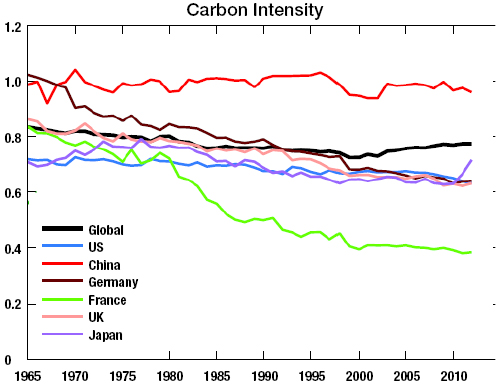
Figure 4b: Carbon intensity, defined as fossil fuel carbon emissions (GtC) divided by energy consumption (Gt of oil equivalent). Energy intensity of China is normalized to 1.56 that of the United States in 2005. Relabelled by Mahurangi Magazine for onscreen clarity
Skyrocketing global CO2 emissions (Fig.1a), increasing 3%/year in the 21st century, have led people, including some scientists, to practically ‘throw in the towel’, i.e., to conclude that global warming of several degrees is inevitable. Such pessimism is uncalled for and such defeatism will be unforgivable in the future when our descendants assess what happened.
The 2009 Copenhagen Accord of the United Nations Framework Convention on Climate Change affirmed a target of reducing emissions to keep global warming from exceeding 2°C relative to pre-industrial times. However, global warming of 2°C is well into the ‘dangerous’ range that all nations agreed to avoid in the Framework Convention signed by 190 nations. Warming of 2°C would lead to eventual sea level rise of several meters, extermination of a substantial fraction of species, and extraordinary increases of extreme regional climate anomalies, including heat waves, drought, forest fires, extreme rainfall and floods, and stronger storms.
Given the 0.8°C warming that has already occurred, the planet’s current energy imbalance, and energy infrastructure in place, it is now practically impossible to keep maximum warming as small as 1°C. Such a goal, which is needed to keep global temperature within or very close to the Holocene range to which civilization is adapted, would require reducing fossil fuel emissions about 6%/year. On the other hand, a target of limiting global warming to 1.5°C is feasible, the principal requirement being that fossil fuel emissions peak by 2020 and then decline by 2%/year; in addition a drawdown of 100 GtC CO2 via improved agricultural and forestry practices would be required and the net forcing change from non-CO2 climate forcings would need to be zero.
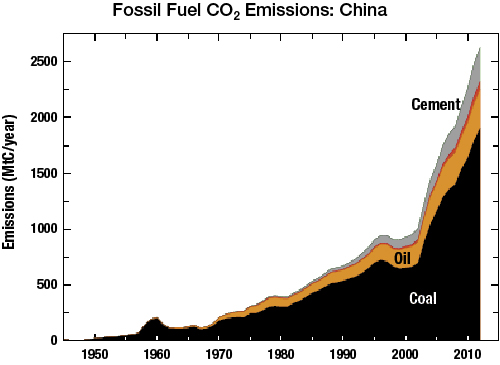
Figure 5a: Fossil fuel CO2 emissions in China. Note different scales in figures 5a and 5b—China ~ 4 × India. Relabelled by Mahurangi Magazine for onscreen clarity
Achievement of any reasonable goal for limiting climate change obviously requires pulling on both the energy intensity and carbon intensity levers. Because these levers must be pulled globally, an across-the-board rising carbon fee/tax is required covering all fossil fuels. The fee would be collected by each participating nation at its domestic mines and ports of entry. The global fee could be initiated by an agreement between China and the U.S., with all other nations invited to have an equivalent carbon fee. Products from nations that did not join (participate) would be taxed at the border of the importing nation, according to a standard formula accounting for the carbon content of the product. Also exporting participating nations would rebate that amount to their own manufacturers for exports to nonparticipating nations, thus assuring that industry in participating nations suffers no trade disadvantage.
A rising carbon fee is the essential underlying policy needed to phase down carbon emissions. However, it is not sufficient. Clean energy technologies must be available to replace fossil fuels at a cost not exceeding the true fossil fuel cost. True cost includes the externalities, specifically human health and environmental costs of waste products that the fossil fuel industry presently dumps into the atmosphere without penalty. Waste products include not only CO2, but also black soot, organic carbon and other aerosols and gases that are highly deleterious to human health, agricultural plants, and wildlife.
Electricity is a clean energy carrier that provides a larger and larger portion of energy use in developed countries. The crucial requirement for achieving a clean energy future and a stable climate is carbon-free pollution-free electricity generation.
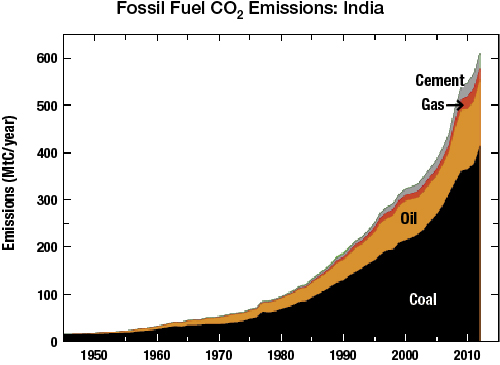
Figure 5b: Fossil fuel CO2 emissions in India. Note different scales in figures 5a and 5b—China ~ 4 × India. Relabelled by Mahurangi Magazine for onscreen clarity
Abundant affordable carbon-free electricity will allow electricity to provide an increasing proportion of energy for transportation and buildings. The essential policy action required to achieve increasing use of clean carbon-free energy for transportation and buildings is a rising carbon fee or tax. The rising carbon fee will drive both the energy intensity and carbon intensity levers. The carbon fee will accelerate efficiency improvements in vehicles and buildings, and it will spur technology and deployment such as improved batteries for electric and hybrid vehicles.
The ‘model’ for economic development ever since the industrial revolution began has been explosive growth of fossil fuel use followed by an effort to clean up the air and water pollution caused by the fossil fuels. It is now clear that a continuation of that approach will have hugely undesirable consequences for all nations, developed and developing. It is in the interests of all, and vital for young people, future generations and nature, that continued and future development be achieved with a new carbon-free model developed via cooperation between developed and developing countries.
China is the urgent case. Global annual carbon emissions have increased 2.9 GtC/year in the 21st century. The increase of China’s carbon emissions in the period 2000-2012 constitutes almost 60% of the global increase. If a pathway and requisite technologies are found for China to achieve its development with much lower carbon emissions, that success may affect the next major developing regions such as India, as well as developed countries, which must phase out their fossil fuel emissions in coming decades.
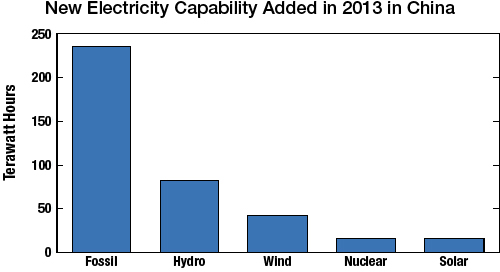
Figure 6: New electric production capability added in China during 2013. Source: A Cohen, Clean Air Task Force, based on preliminary estimates from China Electricity Council for maximum energy production. Assumed capacity factors: fossil (58% per IEA WEO 2013) hydro (34% per IEA WEO 2013); wind (33%); nuclear (90%); solar (15%). Relabelled by Mahurangi Magazine for onscreen clarity
China is making a huge effort to develop increased electricity generation with both coal and clean energies. Indeed, China is now leading the world in installation of new hydropower, wind, solar and nuclear electricity generation. However, the energy development situation in China is often reported, in the West, in very misleading ways. For example, a 2014 article China Roars Ahead with Renewables in Ecologist magazine reprinted from The Conversation, stated ‘Reports of China opening a huge new coal-fired power station every week belie the reality—China is the new global powerhouse for renewable modernization and industrialization of the country—is now being powered more by renewables than by fossil fuels.’ The article concluded ‘These results reveal just how strongly China is swinging behind renewables as its primary energy resource…’ This distortion of reality, pointed out by Armond Cohen of the Clean Air Task Force, is common and contributes to energy misconceptions discussed below.
It is true that China is leading the world in installation of renewable energies. However, a meaningful data presentation for the new energy sources (Fig. 6) shows a rather different picture than that presented in environmentalist literature. Figure 6 shows the production capability of the 2013 installations in terawatt hours. The electric production capability (in terawatt hours) accounts for the capacity factor of each energy source, as opposed, e.g., to misleading numbers for peak output in watts at noon on a sunny day. The new fossil fuel energy output in China, mostly coal, exceeded new wind energy by a factor of six and new solar output by a factor of 27.
China–US cooperation and planetary resurgence
There are many reasons for China and the United States to cooperate in stabilizing climate, the most basic fact being that all nations are in the same boat and will either sink or sail together. China and the U.S. are the source of more than 40% of today’s emissions (Fig. 7a). Reduction of their emissions is essential and urgent.
The United States and China also are responsible for much of the excess CO2 in the air today, the U.S. portion more than 25% and China’s more than 10% (Fig. 7b). Within a few decades China’s contribution is likely to be comparable to that of the U.S. if recent trends continue. Scores of nations bear little or no responsibility for global climate change yet stand to suffer greatly if climate change continues, especially nations at low latitudes or with large populations near sea level. The U.S. and China will bear both moral and legal responsibilities to these other nations, much more so if these two great nations—now that consequences of inaction have become clear—do not now cooperate to take reasonable actions to mitigate climate change.
Cooperation between China and the United States on two vital matters could change the destiny of our planet and our people.
First, the basic requirement for phasing down voracious fossil fuel consumption and moving to clean energy is a rising price on carbon emissions. Agreement by China and the U.S. on rising internal carbon fees would be the turning point, opening the door to near-global movement toward ascendancy of clean energies. A carbon fee is likely to be acceptable to the public and conservative thought leaders in the U.S., provided that it is revenue neutral and thus is not used to make the government bigger and more intrusive. A carbon fee will drive all of the important tools for reducing fossil fuel use: energy efficiency, renewable energies, and nuclear power.
Second, the United States and China should agree to cooperate in rapid deployment to scale in China of advanced, safe nuclear power for peaceful purposes, specifically to provide clean electricity replacing aging and planned coal-fired power plants, as well as averting the need for extensive planned coal gasification in China, the most carbon-intensive source of electricity. China has an urgent need to reduce air pollution and recognizes that renewable energies cannot rapidly provide needed base-load electricity at large scale. The sheer size of China’s electricity needs demands massive mobilization to construct modern, safe nuclear power plants, educate more nuclear scientists and engineers, and train operators of the power plants.
The United States nuclear industry and universities have much to offer, and in turn they have much to gain by cooperating in development of modern safe nuclear power in China. Opposition to nuclear power in the U.S. has slowed but not stopped progress in nuclear technology. However, the realistic size of the market in the U.S. for improved nuclear designs, as well as for evolving still more advanced designs, is limited, at least in the near-term. Furthermore, for reasons that do not need to be debated here, construction time for a nuclear power plant in the U.S. is of the order of a decade, while it is as short as 34 years in China. Thus deep nuclear cooperation between the China and the U.S. over the next 12 decades could produce both (1) base-load electricity in China that allows China’s carbon emissions to peak within a decade and then decline, as is essential if climate is to be stabilized, (2) an opportunity for both countries to achieve progress in nuclear technology and thus a basis for comparing the merits of the most advanced renewable and nuclear technologies.
Failure of the United States and China to achieve such cooperation would practically guarantee the future predicted by the pessimists who believe that humanity is incapable of exercising intelligent free-will in a situation as complex as global climate change, where rewards for fossil fuel use are immediate and the most undesirable consequences are delayed. Failure of the two largest polluters to cooperate, while there is still time to avert disastrous change, would assure that global warming moves well into the dangerous zone, unleashing domino effects as global climate impacts would make it more difficult for all nations to move to clean energies.
Success in the proposed cooperation would not only clear the skies in China and avert lock-in of enormous carbon pollution from coal-fired power and coal gasification. Open involvement of industries of both nations would allow development, demonstration and assessment of the most advanced carbon-free power sources. China is deploying all renewable energies, as well as nuclear power, on large scales. Thus development and assessment of these technologies will aid clean-energy replacement of fossil power plants in the United States and provide clean-energy options for the next intensively developing regions such as India.
Successful cooperation is crucial for the future of our planet and the well-being of young people, future generations and nature. Abundant affordable energy is essential if the scourge of poverty is to be defeated. The task begins at home for China and the United States, but the repercussions of success would ring throughout the planet.
Energy misconceptions
Why do governments do so little to halt the march toward global climate disasters? It may help to analyze the actions people are requesting governments to take. Present popular demands seem to be based in part on misconceptions about nuclear power and renewable energies.
Let me clarify that I am not arguing for any specific mix of energy efficiency, renewables and nuclear power, or suggesting that any specific nation needs to employ nuclear power. I am saying that the global energy discussion should be based on facts, not on myths.
Human lives It is worth watching a 3-minute clip of an ‘anti-nuke’ concert held in New York City in 1979 after the Three Mile Island nuclear accident in Pennsylvania. Participants yearn for the warm glow of a wood fire, even coal, but insist that nuclear power be terminated.
Indoor wood, coal and biofuel fires kill more than 1 000 000 people per year. The Three Mile Island nuclear power plant accident, which exposed nearby Pennsylvania residents to a level of radiation less than the natural annual background level, will cause few if any deaths.
There have been two much more serious nuclear accidents, at Chernobyl and Fukushima. Deaths caused by Fukushima radiation will be few, but the radiation release was a catastrophe for 300 000 people forced to leave their homes. Unfortunately the Japanese government forced many more people to evacuate than necessary. Please check out the brief, readable, Radiation: The Facts by Robert Hargraves. [Redundant reference to PDF deleted]
Are those accidents sufficient reason to abandon nuclear power? We must compare the alternatives. Aircraft provide a relevant analogy. Early airliners had many accidents that killed hundreds of people, but we did not abandon the technology. Instead we improved both the technology and the safety of operations via pilot training, aircraft control systems, and safety protocols and culture. Airlines are now one of the safest modes of travel. Similarly, improved nuclear technologies and operations have the potential to make nuclear power the safest of all energy systems.
Pushker Kharecha and I showed that nuclear power, in supplanting fossil fuels otherwise employed, has saved 1.8 million lives and 64 GtCO2-equivalent carbon emissions and could save millions more lives and billions more tons of emissions. These results were for 1960s–1970s nuclear technology. Advanced nuclear technology has the potential for greater savings.
Public misperceptions about nuclear power were thrust on me after I gave a talk in Australia in which I noted that nuclear power probably was needed to help phase out fossil fuels. My next talk was picketed by people asserting that nuclear power was killing a huge number of people and causing birth defects. When I queried them regarding the sources for these incredible assertions, I was told that Helen Caldicott was the source.
One problem we sometimes have in communicating global warming science to the public is a misperception that the science is based on ‘beliefs’ rather than evidence. That allows deniers to counter it with their own ‘belief’. Caldicott’s assertions were nothing more than her belief. George Monbiot, a respected British journalist, explored in detail the sources of Caldicott’s assertions. The resulting article that he wrote begins:
Over the past fortnight I’ve made a deeply troubling discovery. The anti-nuclear movement to which I once belonged has misled the world about the impacts of radiation on human health. The claims we have made are ungrounded in science, unsupportable when challenged and wildly wrong. We have done other people, and ourselves, a terrible disservice.
Monbiot’s 2-page article, Evidence Meltdown, is well worth reading. The extent to which the public has been misled is, indeed, deeply troubling.
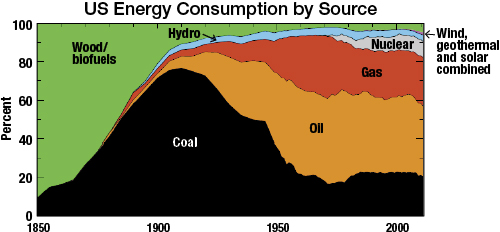
Figure 8: United States energy consumption including wood burning and biofuels. Relabelled by Mahurangi Magazine for onscreen clarity
Renewables can do it People who entreat the government to solve global warming but offer support only for renewable energies will be rewarded with the certainty that the U.S. and most of the world will be fracked-over, the dirtiest fossil fuels will be mined, mountaintop removal and mechanized long-wall coal mining will continue, the Arctic, Amazon and other pristine public lands will be violated, and the deepest oceans will be ploughed for fossil fuels. Politicians are not going to let the lights go out or stop economic growth. Don’t blame Obama or other politicians. If we give them no viable option, we will be fracked and mined to death, and have no one to blame but ourselves.
Most scientists analyzing global and U.S. energy, summarized in Figs. 1 and 8, conclude that rapid global decarbonization requires contributions from all major available avenues: energy efficiency, renewable energies, nuclear power, and perhaps even carbon capture and storage. There is also broad agreement that the best way to find balance among these avenues is honest competition spurred by a rising across-the-board fee or tax on carbon emissions. The carbon fee can be chosen and adjusted to minimize overall economic dislocation, but the longer we wait to initiate the carbon fee, the greater will be the unrequited losses from climate disruption and the greater will be the ultimate economic, physical and spiritual sacrifices.
However, there is an asymmetry in how alternative energies are presented to the public, and I believe this asymmetry is having a large impact on prospects for stabilizing climate. Asymmetry first became obvious to me when I pointed out to a friend some of the limitations of one of the renewable energies. He said ‘Jim, don’t criticize renewable energies! It is o.k. to advocate nuclear power, but don’t do it by criticizing renewables!’
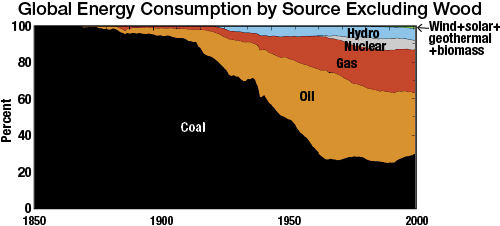
Senate Testimony: Figure 3 from Dr James Hansen’s 13 March 2014 United States Senate testimony. Columbia University Climate and Energy: Fundamental Facts, Responsibilities and Opportunities
I appreciate the rationale, so I always emphasize that we need contributions of all the capable energies (and I point out that I have spent a lot of money on solar panels for our and our children’s homes). However, it is now clear that there is no reciprocity, and the lack of uniform objectivity presents the public with a distorted picture of alternative energy choices.
The asymmetry finally hit me over the head when a renewable energy advocate told me that the main purpose of renewable portfolio standards (RPS) was to ‘kill nuclear’. I had naively thought that the purpose was simply to kick-start renewables. Instead, I was told, because utilities were required to accept intermittent renewable energies, nuclear power would become less economic, because it works best if it runs flat out. What to do when the wind is not blowing? The answer was: have a gas plant ready as back-up. In other words, replace carbon- free nuclear power with a dual system, renewables plus gas. With this approach CO2 emissions will increase and it is certain that fracking will continue and expand into larger regions.
If we care about climate, a ‘carbon-free portfolio standard’ would make more sense than RPS. However, the best approach is a rising carbon fee that allows efficiency, renewables, nuclear power, and carbon capture to compete fairly.
Nuclear waste and nuclear safety: Killing nuclear in the US would make a safer world Conventional nuclear reactors fission only about 0.6% of the mined nuclear fuel. The rest remains as very long-lived radioactive ‘waste’. In fact this waste can be used as fuel for ‘fast’ reactors, which combined with recycling facilities can raise this figure up to about 99%. Fast reactors have the potential to leave a significantly smaller amount of waste which is dangerous for a few hundred years rather than tens of thousands of years.
Once fast reactors enter the mix of nuclear power plants, our nuclear fuel is inexhaustible on time scales of billions of years, putting nuclear power in the same category as solar power and wind power: the fuel will last as long as the sun shines. Japan and the United States have both demonstrated that uranium can be ‘sieved’ from the ocean, so uranium mining on land can be terminated once it is decided to do so. In the near-term, ample inexpensive uranium deposits on land will be utilized.
The United States terminated R&D on fast reactors in 1993, indeed practically eliminated any investment in nuclear technology. A rationale for this policy was an assertion that fast reactors make it more difficult to assure that nuclear material is not diverted to bomb-making. However, nuclear experts point out that there is no inherent reason that fast reactors cannot be as resistant to weapons proliferation as conventional nuclear power technology, which is now widespread, in more than 30 nations.
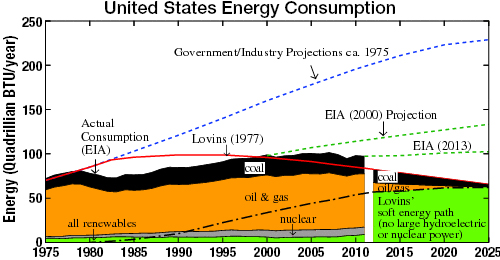
Mind the Green Gap: The updated Figure 2 from Dr James E Hansen’s Storms of My Grandchildren. Relabelled by Mahurangi Magazine for onscreen clarity
The stronger drive for terminating nuclear R&D was the fact that the Democratic Party in the United States had embraced the anti-nuke agenda. Indeed, leaders of the Democratic Party seemed enchanted by a fantastical vision (see Fig. 2 of reference 7, and its update at http://www.columbia.edu/~mhs119/UpdatedFigures/) that fossil fuels, nuclear power, and large hydro power would all be phased out early in the 21st century.
Many Democrats have told me that their hope had been that the U.S. would not build more nuclear power plants. They hoped that the U.S. would abandon nuclear power when the current nuclear plants reached their end-of-life, and they hoped that the rest of the world would follow suit. Many of those Democrats, indeed, I believe a large majority of those who understand the climate threat, are now open-minded about advanced safer nuclear technology.
A safer world requires that the United States recognize the fact that nuclear technology is widespread and is not going away. Fast reactors are being developed in several countries. Russia has agreed to sell fast reactors to China. A safer world is dependent on the United States staying in the nuclear technology game.
U.S. government labs have deteriorated, thanks to the neglect, but they still have potential. However, our crown jewels are our universities and our free enterprise system, which stimulate innovations (if the government does not hamstring the process). They have enormous potential to help solve our energy and climate problem if we use them wisely. More on that later.
Renewable energy is cheaper and faster than nuclear power Of course it is faster to install a solar panel or build a windmill than to build a nuclear power plant. However, the question is how fast and at what cost these energy systems can be brought to scale such that they provide a large fraction of our electricity.
Nuclear power was used to quickly (within 10–15 years) and economically decarbonize electricity grids of France (see Fig. 4 and discussion) and Sweden. Sweden added about 0.6 MWh/year/person of emissions-free nuclear energy in 1970–1986 (including construction time of all reactors), and at peak the rate was 1.4 MWh/year/person. Given the current electricity consumption in China (5.3 PWh/year) and population (approaching 1.4 billion), the 0.6 MWh/year/person rate of nuclear construction would replace China’s current demand in 6.5 years. I am not proposing that as a plan, but rather as an indication of what is feasible.
In the United States bringing sun and wind to large scale requires time to get public approval (around the entire nation) and time to build new electric grids to take the power from its hotspots to where it is needed. It also requires development of energy storage technologies to deal with intermittent energy sources. Without energy storage, it is likely that renewables will be combined with gas burning, which helps assure that our children will be fracked throughout their lives and that fossil fuel burning will push the planet far into the dangerous zone.
The largest portion of renewable energy cost is often hidden, e.g. by RPS and feed-in tariffs, in which the costs are passed on to all utility customers. Such added costs are bearable if the renewable portion of electricity is small, but, as in a Ponzi scheme, there is danger that the system won’t work as the subsidized portion of the scheme grows larger.
The best evaluation of costs will come via large-scale implementation. Germany and California are making serious efforts to implement renewable energy systems, and their public seems willing to bear higher electricity costs. Hopefully, they will be successful in showing that a renewable electric system is feasible and economic, in which case they will justifiably be ahead of the curve and in a position to reap rewards of success.
In the meantime, no approach should be forced on other states or nations. We should not gamble the future of the planet on a single unproven approach..
Summary 1: How Can China and the United States Cooperate?
Today is a point in history upon which the eyes of future generations will focus—not only the eyes of historians, but the eyes of our children, and the eyes of their children. Today we know that climate is beginning to change. We know why climate is changing. And we can picture the consequences for our children and for their children.
China and the United States, working in earnest together, have the potential to change the course that our planet is on. Together they have the strength to forge a path that transitions in an economically efficient way to a world with abundant clean energies.
Two actions are essential for this vision to be achieved:
First, fossil fuels must be made to pay their costs to society. Those costs include the health impacts of air pollution and water pollution, as well as the impacts of climate change. Those costs must be added at a gradual but substantial rate. China and the United States should agree to simultaneously initiate a rising across-the-board (oil, gas, coal) carbon fee, collected by the government at the first sale at domestic mines and ports-of-entry.
Other nations should be invited to adopt their own internal carbon fee. Border duties could be collected on products from those nations that decline to have a carbon fee, and nations with a carbon fee could also rebate to their manufacturers an equivalent amount on products exported to countries that did not have a carbon fee.
Because fossil fuels are presently the primary source of energy in both China and the United States, the rising carbon fee would drive and enforce improvements in energy intensity. The rising carbon fee would also spur clean energy innovations and their widespread adoption.
Second, China and the United States should embark on an intensive cooperative program to develop and deploy modern, safe nuclear power in China, and to cooperate in research and development of even more capable advanced generations of future nuclear power.
Cooperation in renewable energy development and deployment is also encouraged. A rising carbon fee would spur growth of renewables, allowing competition among energy alternatives.
However, the urgent requirement is for clean baseload electric power that can replace coal and avert the need for coal gasification at a price that is competitive with fossil fuels. The large demand in China for new electricity generation and for replacing existing coal plants should allow sufficient experience to drive down costs of all technologies, a benefit that may circle back to the U.S., aiding the replacement of aging nuclear and fossil fuel infrastructure in the U.S.
Rapidity required for deployment of large-scale baseload electric power in China requires initial focus on nuclear power. A substantial role for U.S. universities would be mutually beneficial, invigorating nuclear R&D in the U.S. and training the large number of engineers required for power plant development and operation in China.
Quasi-baseload renewables such as concentrating solar are not cost competitive. For example, the $2.2B Ivanpah solar power plant near the Mojave National Preserve in California has max output 377 MW. With a capacity factor of 20%, its estimated annual output is ~0.66 TWh. General Electric’s AP-1000, a Generation III+ nuclear power plant with passive nuclear safety features, at 90% estimated capacity factor yields 8.8 TWh per year, more than 13 times Ivanpah. The AP-1000 cost for the first two under construction in China is estimated as $3.3B per unit, i.e., per 8.8 TWh/year. Construction time for the first AP-1000, expected to be operational by 2015 will have been 5–6 years. Westinghouse expects construction time to decrease to 36 months after a number of units have been completed, with a moderate reduction in cost. A major advantage of AP-1000 over the solar polar plant is the 0.5-square-mile bootprint of an Ap-1000 facility, which compares with 5 square miles for Ivanpah or 65 square miles for 13 Ivanpahs. Also the Ivanpah power is intermittent, which will require energy storage if solar power is to assume a larger role.
Summary 2: What Can the Public and Scientists Do?
The public I suggest that the public support CitizensClimateLobby.org. People with free time can volunteer to organize a new chapter. Citizens Climate Lobby is growing rapidly and exists now in most states in the U.S. and several other countries. Their objective is to persuade legislators to support fee-and-dividend, i.e., a rising carbon fee collected from fossil fuel companies and distributed 100% to the public, equal amounts to all legal residents.
Fee-and-dividend follows conservative principles. It allows the market to choose among alternative energies and energy efficiency, leaves choices to individuals, and provides no money to increase the size of government. Thus it yields a basis for compromise between conservatives and liberals. Conservatives accept the reality of climate change, but liberals cannot use climate change as an excuse to collect more taxes and increase control over people’s lives.
I also recommend that the public stop providing funds to antinuke environmental groups. Send a letter saying why you are withdrawing your support. Their position is based partly on fear of losing support from anti-nuke donors, and they are not likely to listen to anything other than financial pressure. If they are allowed to continue to spread misinformation about nuclear power, it is unlikely that we can stop expanded hydro-fracking, continued destructive coal mining, and irreversible climate change.
Scientists Don’t let the present failure of governments to meaningfully address global carbon emissions discourage you to a point of self-defeating pessimism. Once a carbon fee is achieved, technology development and emissions decline can be rapid. Today it is still realistic to aim for peaking of global emissions by the end of this decade, followed by emissions decline of 2%/year or more and maximum global warming of no more than 1.5°C relative to pre-industrial. In that case, ways to draw down CO2 and avoid a climate system out of control remain feasible.
The public is unaware of pressure put on scientists to be silent about nuclear power. After I mention nuclear power I receive numerous messages, often heart-breaking in their sincerity as they repeat Caldicott-like unfounded assertions and beg me not to mention nuclear power. More disconcerting is the pressure from environmental organizations and the liberal media. Each large environmental organization has a nuclear ‘expert’ (often a lawyer, not a physicist) with a well-developed script to respond to any positive statement about nuclear power. Liberal media follow precisely the merchants of doubt approach that the right-wing media use to block action on climate change; raising fears about nuclear power is enough to stymie support. The liberal media employ not only environmental organization ‘experts’, but former heads of the Nuclear Regulatory Commission (NRC) appointed during Democratic Administrations.

New York Times 1988: “The earth has been warmer in the first five months of this year than in any comparable period since measurements began 130 years ago, and the higher temperatures can now be attributed to a long-expected global warming trend linked to pollution, a space agency scientist reported today.” image National Aeronautics and Space Administration | reporter Philip Shabecoff
These NRC talking heads are well-spoken professionals with a spiel that has been honed over years. And they have a track record. The NRC, despite its many dedicated capable employees, has been converted from the top into a lawyer-laden organization that can take many months or years to approve even simple adjustments to plans. It is almost impossible to build a nuclear power plant in the United States in less than 10 years, and this is not because an American worker cannot lay one brick on top of another as fast as a Chinese worker. Anti-nukes know that the best way to kill nuclear power is to make it more expensive.
Given this situation, my suggestion to other scientists, when they are queried, is to point the public toward valid scientific information, such as the Radiation 101 page written by Bob Hargraves. Sustainable Energy—Without the Hot Air by David MacKay lets the public understand calculations as in the footnote above, thus helping the public to choose between renewables and nuclear power in any given situation—there is a role for both.
Yes, a few scientists assert that renewables alone are sufficient, a position that gets applause. As for me, I would prefer to stick to science and tend my orchard. Unfortunately, the situation is different than it was in the 1600s, when religion pressured science. The urgency of now steals the luxury of silence. Galileo knew that the truth would come out eventually and no one would be harmed. So he could just mutter under his breath ‘and yet it moves!’ That, I cannot do.
Acknowledgments Thanks especially to Makiko Sato for much help with the data and figures, and Pushker Kharecha, Staffan Qvist, Armond Cohen, Tom Blees, Steve Brick, Jessica Lovering, Ashley Finan for data and helpful suggestions.

